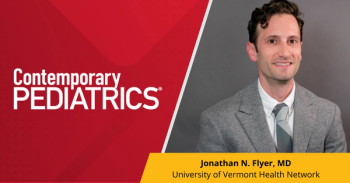
Read up on how to fight illiteracy
Learn more about Reach Out and Read, a literacy outreach program.
Recently, UNICEF conducted a survey of 21 of the richest countries, to see how much of that wealth was reflected on its children. One of the measures of wealth it analyzed was whether a child had more than 10 books at home. For a low-income family, 10 books can be a lot. New picture books can run close to $20 each. For a family without hand-me-down books from older children or friends, books are often something in other people's houses.
The group Reach Out and Read (ROR) has come up with a wonderfully direct way of solving this problem. They send pediatricians books, and the pediatricians give them to kids on well-child visits. Each well-child visit scores the child another book. By the time kindergarten rolls around, the child has those 10 books. It's better for them than a lollipop, and lasts longer than a sticker!
ROR was founded at Boston Medical Center in 1989, when it was Boston City Hospital. Since then it's grown to over 3,200 programs nationwide, distributing 4.6 million books to 2.8 million children. For practices that start new programs, ROR tries to cover the costs of books for the first six months. After that, it's approximately $5.50 per child each year, or $2.75 per book. The books plus shipping costs less than just the shipping from some online retailers.
To coordinate the program, ROR trains a "medical director" at each practice to properly disseminate the books, explaining to parents the benefit of reading. The training can be completed online or by way of a video. Over 46,000 staff members have been trained, from pediatricians to nurses and clerks.
The reading plan even works if parents are not familiar enough with the child's language to read it, or never learned to read at all. They can still make up stories about the pictures, and point out what's illustrated in the book. Parent and child could even learn to read at the same time.
Even if you decide the ROR program isn't for your practice, you can still do your part to encourage literacy. Fill your waiting room with age-appropriate books. Consider having a lending library of sorts, where children involved in a book can take it home, and return it on the next visit.
The preventive prescription for the disease of illiteracy is books. Illiteracy can add to absenteeism, delinquency, substance abuse, even teen pregnancy. The board and picture books young children receive are like a daily spoonful of medicine, holding back the bacteria Ignormicrobia illiteritis. Kids who have the opportunity to read at a young age will happily take to a broad spectrum of reading materials throughout their life-maybe even homework.
At best, a program like Reach Out and Read may be that immunization against illiteracy. At worst, it's still an enrichment of children's and families' lives. Read more at
JEFF RYAN, Managing Editor, has nothing to disclose in regard to affiliations with, or financial interests in, an organization that may have an interest in any part of this article.
Newsletter
Access practical, evidence-based guidance to support better care for our youngest patients. Join our email list for the latest clinical updates.









